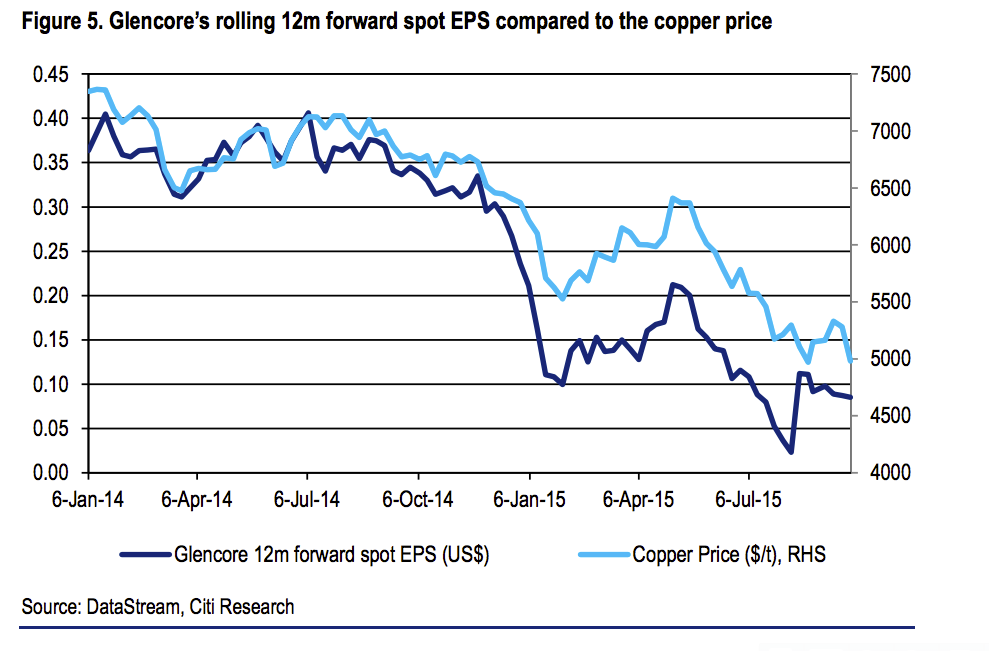-
Tips for becoming a good boxer - November 6, 2020
-
7 expert tips for making your hens night a memorable one - November 6, 2020
-
5 reasons to host your Christmas party on a cruise boat - November 6, 2020
-
What to do when you’re charged with a crime - November 6, 2020
-
Should you get one or multiple dogs? Here’s all you need to know - November 3, 2020
-
A Guide: How to Build Your Very Own Magic Mirror - February 14, 2019
-
Our Top Inspirational Baseball Stars - November 24, 2018
-
Five Tech Tools That Will Help You Turn Your Blog into a Business - November 24, 2018
-
How to Indulge on Vacation without Expanding Your Waist - November 9, 2018
-
5 Strategies for Businesses to Appeal to Today’s Increasingly Mobile-Crazed Customers - November 9, 2018
Glencore ‘financially robust’ and reducing spot risk – Barclays
Suffering from weakening global commodities for the past one year, Glencore has informed its investors about its plans to reduce debt by $10billion.
Advertisement
Glencore Plc (LON:GLEN) representatives told investors that the firm’s debt is soundly covered and it has no solvency issues to warrant rating concerns, adding that even in the event of a downgrade the costs will be minimal, a note by Barclays, which organised the meeting, revealed yesterday. Glencore’s credit lines have no debt covenants or credit rating triggers that would force it to renegotiate with its group of more than 70 banks, the executives said, according to Barclays. The firm can sell assets, which is a route taken by fellow commodity firm Rio Tinto this week after the company agreed to sell its stake in an Australian mine for US$606m. Chairman Tony Hayward bought an extra 100,000 shares in the company.
That’s what a team of Barclays’ credit analysts, led by Darren Hook, did.
What began that morning in London, with a sudden plunge in Glencore’s share price, cascaded across oceans and time zones and left the company’s billionaire chief executive, Mr Ivan Glasenberg, scrambling to calm anxious shareholders, creditors and trading partners. “The risk of further falls in commodity prices remains”, said Barclays. After dropping drastically on Monday, the stock was volatile throughout the week.
On Wednesday, Glencore unveiled fresh data, according to Barclays, including the way it funds trading. Barclays had convened a meeting with Glencore’s management on the ongoing adverse conditions for the commodity giant.
A source close to Glencore confirmed that the meeting had mainly focused on the balance sheet and debt reduction plan.
“Downside risk will likely continue to dominate” the company’s shares “until it can reinforce its capital base”, wrote Dominic O’Kane, an analyst at JP Morgan Cazenove in London.
Glasenberg also noted that under Glencore’s current credit structure, the company would not need to tap the banking system for new financing until 2017. The deal has an extension option, meaning it can push the facility out by another year, but doing so could send a calamitous message to the market. Selling by-products like silver, gold from copper production at an agreed price much before mining will enhance revenues for the company.
Concerns centered on Glencore’s capacity to safeguard its investment-grade credit rating unless it took greater measures to cut back debt particularly if commodity prices remained lower for longer amid a gloomy outlook for the economy in China, the major consumer of coal, copper and nickel among other commodities.
Advertisement
The company met debt investors on Wednesday and revealed details of how its secretive trading arm performs.





























